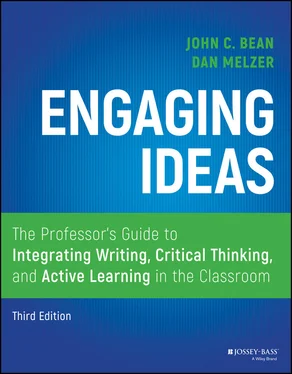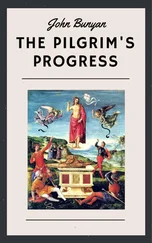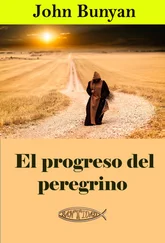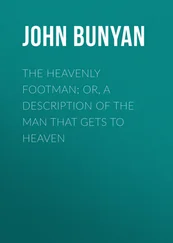Critical Thinking Rooted in Problems
Although definitions in the pedagogical literature vary in detail, in their broad outlines they are largely elaborations, extensions, and refinements of the progressive views of John Dewey (1916), who rooted critical thinking in the students' engagement with a problem. Problems, for Dewey, evoke students' natural curiosity and stimulate learning and critical thought. “Only by wrestling with the conditions of the problem at first hand, seeking and finding [their] own way out, does [the student] think” (188).
Part of the difficulty of teaching critical thinking, therefore, is awakening students to the existence of problems all around them. Meyers (1986), who agrees with Dewey that problems are naturally motivating, argues that teachers ought to begin every class with “something that is a problem or a cause for wonder” (44). Meyers quotes philosopher and chemist Michael Polanyi, who claims that “as far down the scale of life as worms and even perhaps amoebas, we meet a general alertness of animals, not directed towards any specific satisfaction, but merely exploring what is there: an urge to achieve intellectual control over the situations confronting [them]” (41).
Presenting students with problems, then, taps into something natural and self‐fulfilling in our beings. In his fifteen‐year study of what the best college professors do, Ken Bain (2004) shows that highly effective teachers confront students with “intriguing, beautiful, or important problems, authentic tasks that will challenge them to grapple with ideas, rethink their assumptions, and examine their mental models of reality” (18). Set at the appropriate level of difficulty, such “beautiful problems” create a “natural critical learning environment” that engages students as active and deep learners. Similarly, Brookfield (1987) claims that critical thinking is “a productive and positive” activity. “Critical thinkers are actively engaged with life” (5). This belief in the natural, healthy, and motivating pleasure of problems—and in the power of well‐designed problems to awaken and stimulate the passive and unmotivated student—is one of the underlying premises of this book.
Disciplinary versus Generic Domains for Critical Thinking
Not all problems, however, are academic problems of the kind that we typically present to students in our classrooms or that we pose for ourselves in doing scholarly research. Academic problems are typically rooted within a disciplinary conversation: to a large extent, these problems are discipline‐specific, because each discipline poses its own kinds of questions and conducts inquiries, uses data, and makes arguments in its own characteristic fashion. As Anne Beaufort (2007) has shown, to think and write like a disciplinary expert, students must draw not only on subject matter knowledge but also on knowledge about the discipline's genre conventions, its methods of argument, its typical kinds of evidence, its ways of referencing other researchers, and its typical rhetorical contexts and audiences. Chapters 3and 4develop strategies for helping students think rhetorically about their purpose, audience, genre, and discourse community. Chapter 10addresses Beaufort's novice‐expert schema in more detail by drawing on rhetorical understanding to teach undergraduate research.
Although academic problems typically have discipline‐specific features, certain underlying aspects of critical thinking are generic across all domains. According to Brookfield (1987), two “central activities” define critical thinking: “identifying and challenging assumptions and exploring alternative ways of thinking and acting” (71). Joanne Kurfiss (1988) likewise believes that critical thinkers pose problems by questioning assumptions and aggressively seeking alternative views. For her, the prototypical academic problem is “ill‐structured”; that is, it is an open‐ended question that does not have a clear right answer and therefore must be responded to with a proposition justified by reasons and evidence. “In critical thinking,” says Kurfiss, “all assumptions are open to question, divergent views are aggressively sought, and the inquiry is not biased in favor of a particular outcome” (2).
The Link between Writing and Critical Thinking
Given this view of critical thinking, what is its connection with writing? Quite simply, writing is a process of doing critical thinking and a product that communicates the results of critical thinking. As we show in chapter 2, writing instruction goes sour whenever writing is conceived primarily as a “communication skill” rather than as a process and product of critical thought. If writing is merely a communication skill, then we primarily ask of it, “Is the writing clear?” But if writing is critical thinking, we ask, “Is the writing interesting? Does it show a mind actively engaged with a problem? Does it bring something new to readers? Does it make an argument?” As chapters 2and 3explain, experienced writers begin by posing two kinds of problems—what we might call subject matter problems and rhetorical problems. Subject matter problems drive the writer's inquiry. The writer's thesis statement (or hypothesis to be tested in empirical research) is a tentative response to a subject matter problem; it poses a contestable “answer” or “solution” that must be supported with the kinds of reasons and evidence that are valued in the discipline. But writers also think critically about rhetorical problems: who is my audience? What genre should I employ and what are its features and conventions? How much do my readers already know about and care about my research question? How do I want to change my audience's views? What alternative views must I consider? Writers produce multiple drafts because the act of writing is itself an act of problem‐solving. Behind the scenes of a finished product is a messy process of exploratory writing, conversation, and discarded drafts. Chapters 2and 3deal with these issues in depth.
Step 2: Design Your Course with Critical Thinking Objectives in Mind
Once teachers are convinced of the value of critical thinking, the next step is to design a course that nurtures it. What is such a course like? In her comprehensive review of the literature on critical thinking, Kurfiss (1988) examined a wide range of successful disciplinary courses devoted to the teaching of subject matter and critical thinking. In each case, she explains, “the professor establishes an agenda that includes learning to think about subject matter. Students are active, involved, consulting and arguing with each other, and responsible for their own learning” (88). From this review, she derives eight principles for designing a disciplinary course that supports critical thinking:
1 Critical thinking is a learnable skill; the instructor and peers are resources in developing critical thinking skills.
2 Problems, questions, or issues are the point of entry into the subject and a source of motivation for sustained inquiry.
3 Successful courses balance challenges to think critically with support tailored to students' developmental needs.
4 Courses are assignment centered rather than text and lecture centered. Goals, methods, and evaluation emphasize using content rather than simply acquiring it.
5 Students are required to formulate and justify their ideas in writing or other appropriate modes.
6 Students collaborate to learn and to stretch their thinking, for example, in pair problem solving and small‐group work.
7 Several courses, particularly those that teach problem‐solving skills, nurture students' metacognitive abilities.
8 The developmental needs of students are acknowledged and used as information in the design of the course. Teachers in these courses make standards explicit and then help students learn how to achieve them. (88–89)
Читать дальше












